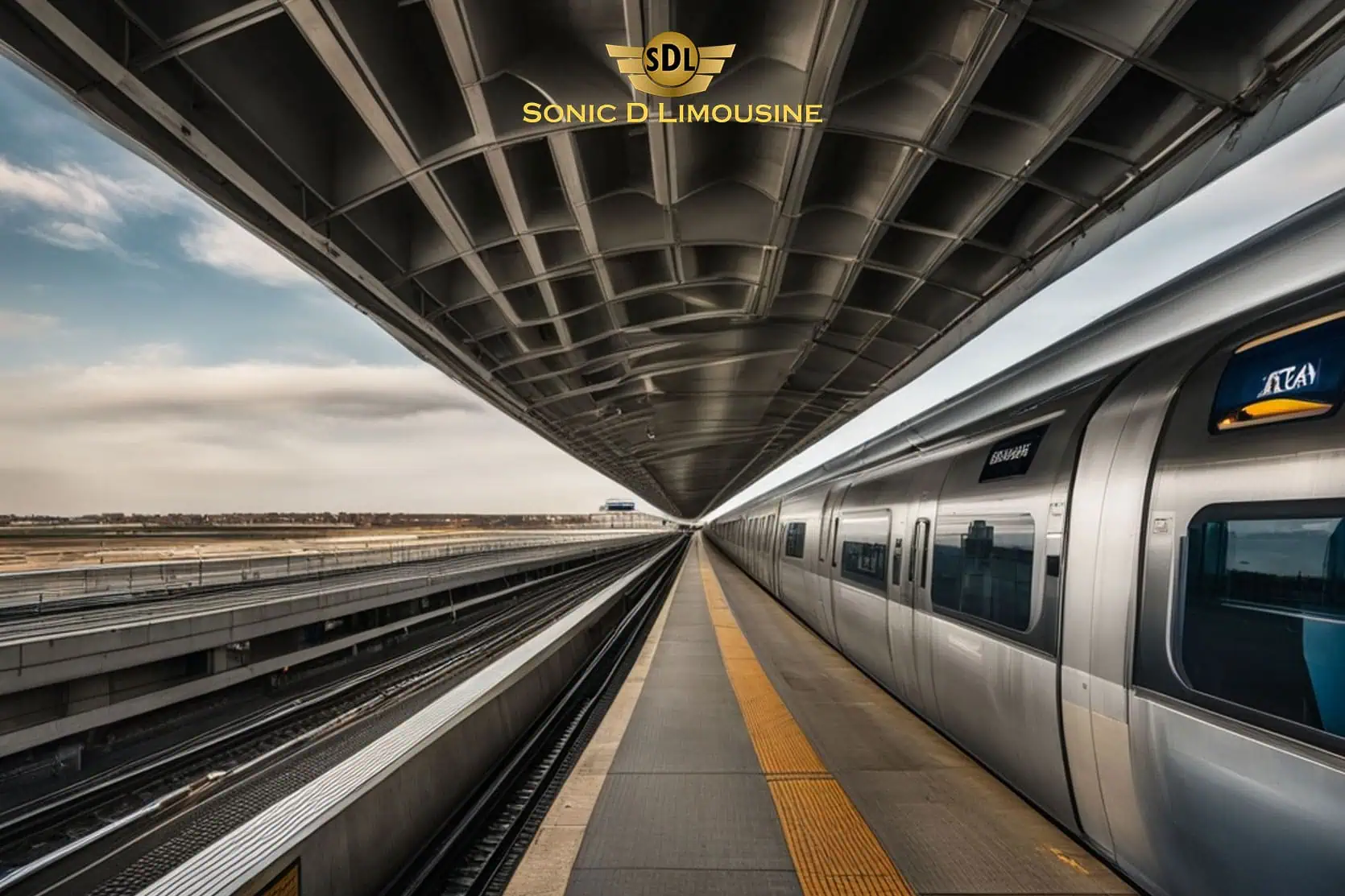The PATH Train, a cornerstone of the rail system connecting New York and New Jersey, offers seamless transit options for commuters and tourists alike. This article delves into the significance of the PATH Train, its routes, and its impact on daily travel between these two bustling states. Whether you’re a daily commuter or planning a visit, understanding the PATH Train’s operations can enhance your travel experience.
Article Outline
-
What is the PATH Train?
- Explanation of the PATH Train and its role in the rail system.
- Brief history and significance in connecting New York and New Jersey.
-
How Does the PATH Train Operate?
- Overview of the PATH system’s operations.
- Key technologies like communications-based train control.
-
PATH Train Routes: Where Can You Go?
- Detailed look at the main routes, including the Journal Square–33rd Street line and the Newark–World Trade Center line.
- Discussion of major stops like Hoboken, Exchange Place, and 33rd Street.
-
Navigating the PATH Stations
- Tips for using the PATH stations efficiently.
- Highlights of major stations such as Journal Square and Hoboken Terminal.
-
The Future of PATH: Upcoming Developments
- Insights into the PATH Forward Program and future capital plans.
- Potential extensions and improvements in service.
-
PATH Train and NJ Transit: A Seamless Connection
- How PATH integrates with NJ Transit for a comprehensive transit experience.
- Benefits for commuters traveling between New York and New Jersey.
-
Payment Options: Total Access PATH Payment and Beyond
- Overview of payment methods, including the new contactless options.
- How to use PATH for a hassle-free journey.
-
PATH Train Service: Reliability and Frequency
- Analysis of PATH’s service frequency and reliability.
- Impact of the 27.6 billion capital plan to revitalize the system.
-
Challenges and Solutions: Addressing PATH’s Issues
- Common challenges faced by PATH commuters.
- Solutions and improvements being implemented to enhance service.
-
PATH Train and the Community: Economic and Social Impact
- The role of PATH in supporting the local economy.
- Social benefits of a well-connected transit system.
What is the PATH Train?
The PATH Train, short for Port Authority Trans-Hudson, is a vital commuter railroad operating under the jurisdiction of the Port Authority of New York and New Jersey. It serves as a rapid transit system connecting key locations in New York City, including Lower Manhattan, to various points in New Jersey. The PATH Train has long operated as a crucial link for daily commuters and tourists, facilitating efficient travel between these two states.
The PATH Train’s history dates back to its operation by the Hudson and Manhattan Railroad. Over the years, it has evolved into a modern rapid transit system, playing a pivotal role in the region’s transportation network. Its significance lies in its ability to provide a reliable and cost-effective means of travel, reducing traffic congestion and supporting economic activities across state lines.
How Does the PATH Train Operate?
The PATH system operates with a focus on efficiency and safety, utilizing advanced technologies like communications-based train control. This technology enhances the system’s operational capabilities, ensuring smooth and timely train movements. The PATH Train service begins early in the morning and continues until late at night, accommodating the varied schedules of its passengers.
The PATH Train is known for its punctuality and reliability, making it a preferred choice for many commuters. With a well-maintained infrastructure and regular service updates, the PATH Train system ensures a seamless travel experience for its users. The Port Authority of New York and New Jersey oversees its operations, ensuring compliance with safety standards and continuous improvement of services.
PATH Train Routes: Where Can You Go?
The PATH Train offers several routes, each catering to different travel needs. The Journal Square–33rd Street line, for instance, connects key destinations such as Journal Square and 33rd Street in Manhattan. This route is popular among commuters traveling to and from Jersey City, offering direct access to the heart of New York City.
Another significant route is the Newark–World Trade Center line, which connects Newark Liberty Airport Station to the World Trade Center in Lower Manhattan. This route is vital for passengers wanting to travel between New Jersey and the financial district of New York City. With stops at major stations like Harrison and Exchange Place, the PATH Train ensures comprehensive coverage of key areas in both states.
Navigating the PATH Stations
Efficient navigation of PATH stations can enhance your travel experience. Major stations like Journal Square and Hoboken Terminal are equipped with amenities to facilitate smooth transit. The Hoboken Terminal, for example, serves as a hub for various transit options, including NJ Transit buses and trains, providing a seamless connection for travelers.
When using the PATH stations, it’s essential to familiarize yourself with the layout and available facilities. Platforms at Grove Street and other stations are designed for easy access, ensuring a hassle-free boarding experience. By understanding the station’s layout and services, you can make the most of your journey on the PATH Train.
The Future of PATH: Upcoming Developments
The future of the PATH system looks promising, with several developments on the horizon. The PATH Forward Program aims to enhance the system’s capacity and reliability, addressing current challenges and preparing for future demands. This program includes a 10-year capital plan that includes upgrades to infrastructure and the introduction of new technologies.
One of the significant developments is the potential extension of PATH services to new areas, improving access and convenience for commuters. The PATH will spend resources on modernizing the system, ensuring it meets the growing needs of the region’s population. These developments reflect the commitment of the Port Authority of New York and New Jersey to providing a world-class transit system.
PATH Train and NJ Transit: A Seamless Connection
The integration of PATH Train services with NJ Transit offers a comprehensive transit experience for commuters. By coordinating schedules and services, these two systems provide a seamless connection for travelers moving between New York and New Jersey. This integration is particularly beneficial for those commuting to Manhattan from various parts of New Jersey.
NJ Transit serves as a vital link for passengers traveling to PATH stations, such as Newark Liberty Airport Station and Hoboken. The collaboration between PATH and NJ Transit ensures efficient transfer options, reducing travel time and enhancing convenience. This integration highlights the importance of coordinated transit systems in supporting regional mobility.
Payment Options: Total Access PATH Payment and Beyond
The PATH Train offers various payment options to suit the needs of its passengers. The Total Access PATH Payment system provides a convenient way to pay for rides, ensuring a smooth and hassle-free journey. Additionally, the introduction of new contactless payment methods has further simplified the process, allowing passengers to use on PATH with ease.
These payment options are designed to enhance the overall travel experience, making it easier for commuters to access PATH services. By offering multiple payment methods, the PATH system caters to the diverse preferences of its users, ensuring a user-friendly approach to fare collection.
PATH Train Service: Reliability and Frequency
The PATH Train is renowned for its reliability and frequency, making it a dependable choice for daily commuters. The service on the Newark–World Trade Center line, for example, operates with high frequency, ensuring minimal waiting times for passengers. This reliability is a result of the 27.6 billion capital plan to revitalize the system, focusing on infrastructure improvements and service enhancements.
The PATH Train’s commitment to providing timely and efficient service is evident in its operational strategies. By maintaining a consistent schedule and addressing potential disruptions promptly, the PATH system ensures a reliable transit experience for its users. This focus on reliability is crucial in supporting the daily travel needs of commuters between New York and New Jersey.
Challenges and Solutions: Addressing PATH’s Issues
Despite its many advantages, the PATH system faces certain challenges that impact its operations. Issues such as overcrowding during peak hours and occasional service disruptions can affect the travel experience. However, the Port Authority of New York and New Jersey is actively working on solutions to address these challenges.
One of the key strategies involves infrastructure upgrades and service expansions to accommodate growing passenger numbers. By investing in the PATH Forward Program and other initiatives, the PATH system aims to enhance capacity and reduce congestion. These efforts reflect the commitment to providing a high-quality transit system that meets the needs of its users.
PATH Train and the Community: Economic and Social Impact
The PATH Train plays a vital role in supporting the local economy and enhancing social connectivity. By facilitating easy access to major business districts and residential areas, the PATH system contributes to economic growth and development. It enables businesses to thrive by providing a reliable means of transport for employees and customers alike.
Socially, the PATH Train fosters community connections by linking diverse neighborhoods and promoting cultural exchange. It serves as a vital link for residents of New York and New Jersey, enhancing their quality of life through improved mobility. The PATH system’s impact extends beyond transportation, contributing to the overall well-being of the communities it serves.
Key Takeaways
- PATH Train Overview: A crucial rail system connecting New York and New Jersey, operated by the Port Authority of New York.
- Routes and Operations: Includes major routes like Journal Square–33rd Street and Newark–World Trade Center, with reliable and frequent service.
- Station Navigation: Efficient use of stations like Journal Square and Hoboken Terminal enhances travel experience.
- Future Developments: The PATH Forward Program and capital plans aim to improve capacity and service.
- Seamless Transit: Integration with NJ Transit offers comprehensive travel options.
- Payment Methods: Total Access PATH Payment and new contactless options provide convenience.
- Service Reliability: Commitment to punctual and frequent service supported by infrastructure investments.
- Challenges and Solutions: Ongoing efforts to address overcrowding and service disruptions.
- Community Impact: Supports economic growth and social connectivity across New York and New Jersey.












































0 Comments